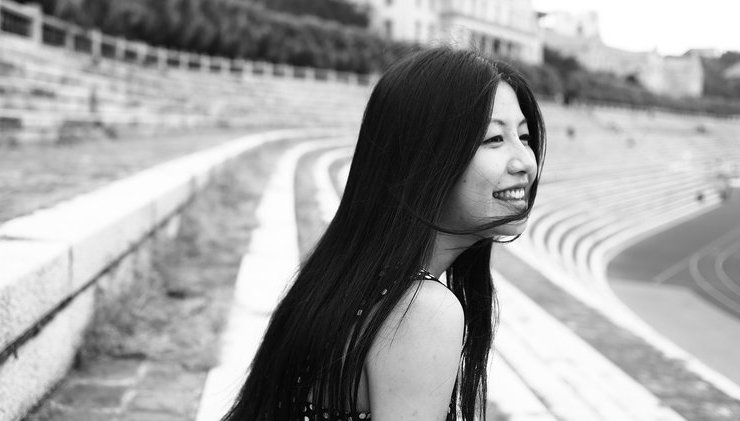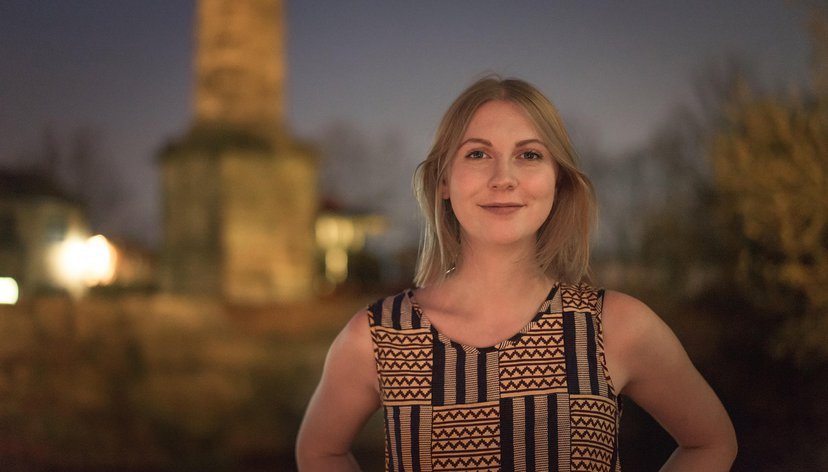
Key details
Date
- 15 February 2022
Author
- RCA
Read time
- 5 minutes
Our MRes RCA: Communication Design Pathway gives students a unique opportunity to form a dynamic community centred around the research and practice of communication design – as a foundational structure of the world around us.
Graduates from the programme have gone on to further study in academia and returned to their professional settings with renewed interest and understanding of the social and political resonances of their work.
We spoke to the students and alumni of the Communication Design MRes to find out why communication design research matters to them.
Key details
Date
- 15 February 2022
Author
- RCA
Read time
- 5 minutes
Bianca Maria Nitu

“The MRes Communication Design Pathway guided me in understanding what experimental can mean – shaping my path as an interdisciplinary practitioner.”
For Bianca, putting a research-led approach at the heart of her practice has allowed her to grow more experimental methods. ‘The role of the designer is human-centred and concerned with behaviour systems – cultural, social, political…’ Bianca told us. ‘In a world where these systems are ever-changing, designers must evolve to become multi-layered. The MRes Communication Design Pathway guided me in understanding what experimental can mean – shaping my path as an interdisciplinary practitioner. Studying our means of communication is key to understanding the responsibilities of design – a continuous analysis of the world we live in, rendered in visual expression.'
This experimental and research-led practice is evident in her final graduate project exploring what happens when we take typography into a 3D space, going from a letter-form to an object-form. ‘Graphic Design has long been dictated by 2D. This project was meant to be an exploration of 3D space, an inquiry into medium boundaries and an ode to the capabilities of technology.’
The multidisciplinary community of the Communication Design MRes was key in pushing Bianca towards new speculations on how design is integrated with systems of thought. ‘For me, the uniqueness of the programme comes from its interdisciplinarity and people. I have been very lucky to mix with practitioners from various areas of study. My thesis was directly impacted and took influence from architecture, industrial design, and fine art.’
Melissa Lu
From Google to the RCA to a PhD in VR design, Melissa Lu’s career trajectory was directly impacted by the skills in experimental interaction design approaches and collaborative VR systems that she developed while on the at the RCA. ‘The Communication Design MRes gave me the space and opportunity to refine my interests, and prepare me for the unexpected.’
“Communication Design is all around us, whether in government messages or marketing campaigns; there are endless capabilities that can be delivered through a variety of formats.”
For Melissa too, Communication Design structures our world. ‘Communication Design is all around us, whether in government messages or marketing campaigns; there are endless capabilities that can be delivered through a variety of formats.’ And the ubiquity and immediacy of communication technology is what inspired her final graduate project.
Made in partnership with the BT Archives, Universally Personal Icons asks participants to create their own unique iconography reflecting their emotions and experiences in the pandemic. These are then sent away and returned to the participant after a set period of time as a reflective snapshot. ‘By offering the opportunity for a pause to reflect, and create a future memory of this era, the service aims to provide relief in this extraordinary situation.’
The project allowed Melissa to explore design’s juxtaposition of the universal and personal. By making her own isotypes she reflected on her own personal history and embedded cultural narratives – allowing her to move towards the concept of a decolonised design. ‘What started out as a personal typographic experimentation on contemporary aesthetics and design intention eventually evolved into a dissection of fundamental design principles and their origins.’
Yuzhen Cai

With a background in illustration and journalism, it was the interdisciplinary aspect of the MRes Communication Design Pathway that attracted art director and illustrator Yuzhen Cai – and immediately challenged her. ‘During the MRes course, I was challenged by questions such as “who are you?” and “what roles are you taking?” This made me re-examine myself and my position as an illustrator. I started to use my practice as a method to know and to think.’
The programme helped Yuzhen re-think the role of the illustrator as a producer of knowledge, particularly in relation to her own experience as a Chinese migrant to the UK, which situated her in a ‘non-binary, ambiguous and in-between area’ not easily captured by illustrative interpretations. Inspired by the need for alternative narratives of migration, her final project asked ‘how Chinese ethnic migrant interviewees perceive home and considers how to illustrate their perceptions from a non-binary position.’ Illustration research became the ‘wheel to drive, guide and explore’ these different perceptions of home.
“After graduating, I chose to work as both an illustrator and art director, as I always have the urge to tell a story.”
Yuzhen is now an Associate Art Director for Saatchi & Saatchi and a freelance illustrator. The opportunity to work with partners such as the BT Archives and the Design Museum while studying at the RCA helped her re-think her work, informing both her final project and career trajectory after graduating. The collaboration with the Design Museum in particular helped her to realise her passion for telling stories through writing and illustration, whether detailing her own story, those of the wider Chinese migrant community or even a brand narrative. ‘That’s why after graduating, I chose to work as both an illustrator and art director, as I always have the urge to tell a story.’
Maria Koch

“I see the designed world as a legacy of people’s imagination – it speaks of our history and triggers future-thinking.”
Studying communication design research during a pandemic was a uniquely catalysing experience for Maria Koch, whose graduate project explores barriers and transparency in a newly cordoned off post-covid world. ‘In the past year, professional activities, such as designing and conducting research, have mainly taken place in a personal environment, a magnifying glass has been placed on what the overlap of these concepts can mean.’
Designing in plexi-glass allowed Maria to explore what a world of transparency could look like and was a way of physically materialising what research in communication design can manifest – the unshakeable link between our social and political world and the world of made objects that physically surrounds us. ‘I see the designed world as a legacy of people’s imagination – it speaks of our history and triggers future-thinking.’
Michelle Devlin

“The MRes has allowed me to blend my prior experience in studio practice with my thirst for reading, writing, and sharing information.”
Having worked in graphic design studios and studied font design, it was actually a research seminar taken as an undergraduate that led Michelle Devlin to the RCA. ‘So far, the MRes has allowed me to blend my prior experience in art/design studio practice with my thirst for reading, writing, and sharing information.’
Michelle moved from the United States to study in the UK, where MRes programmes are more available – the importance of communication design research is clear to Michelle. ‘People should care about Communication Design research because it’s the foundation of sharing information – it’s essentially how we engage with family, friends, strangers, love interests, rivals, pets, books, trees and more. Without research, how can we gain a more nuanced understanding of how we talk to each other? And without such nuance, how can all of us progress in our understanding of one another without sharing information?’
Drawing on her past study of font design and a multicultural background, Michelle became interested in research on multilingual fonts and is bringing this passion to a final project. 'This research is important to me because in my previous font design training, there was a lack of cultural diversity in the practice so I’d like to take it upon myself to read, learn, and collate information about font design practices across the world.’
“People should care about Communication Design research because it’s the foundation of sharing information – it’s essentially how we engage with family, friends, strangers, love interests, rivals, pets, books, trees...”


